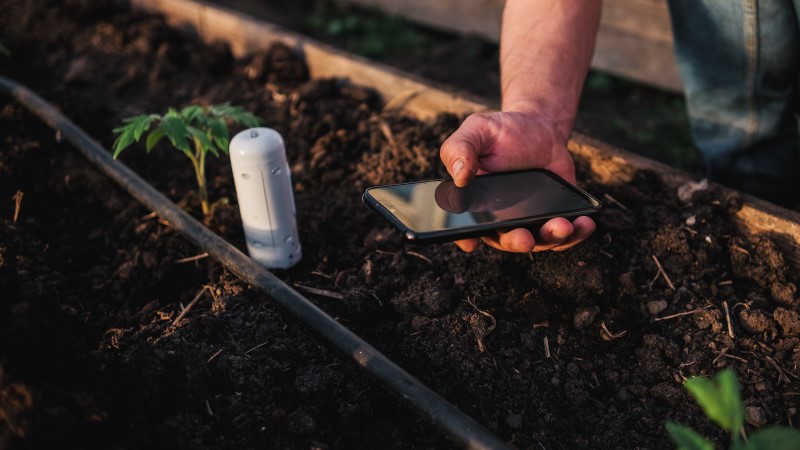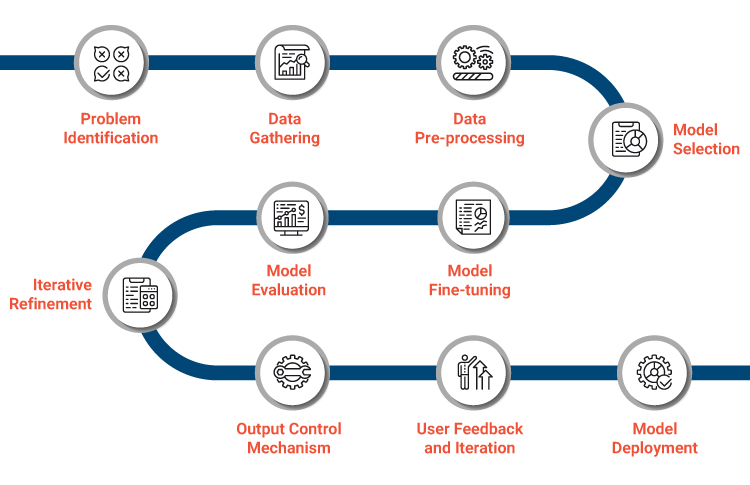We are standing at the precipice of a technological revolution, one where the digital and physical worlds are not just connected, but are in constant, intelligent conversation. For years, the Internet of Things (IoT) has promised a future of interconnected devices, collecting vast oceans of data from every corner of our environment. However, data alone is just noise. The true transformation begins when this network of sensors gains the ability to perceive, reason, and act. This is the world being built by the fusion of Artificial Intelligence (AI) and IoT, creating a sentient network that is redefining industries and reshaping our daily lives. This convergence is moving beyond simple data logging to proactive, predictive intelligence, turning passive sensors into active participants in our world. From optimizing crop yields on a farm to monitoring our personal health with unprecedented accuracy, AI-powered sensors are the new eyes and ears of a smarter planet. This article delves into the technical underpinnings, transformative applications, and future trajectory of this powerful technological synergy.
The Symbiotic Relationship Between AI and IoT Sensors
The integration of AI and IoT is less of a merger and more of a symbiotic evolution. While IoT provides the sensory nervous system—the vast network of devices collecting data—AI provides the brain, processing that information to derive meaning and drive intelligent action. This partnership fundamentally alters the value proposition of connected devices, marking a significant paradigm shift from reactive monitoring to predictive and autonomous systems.
From Raw Data to Actionable Intelligence
Traditional IoT architecture primarily focused on data aggregation. A sensor, whether measuring temperature in a factory or foot traffic in a retail store, would collect raw data points and transmit them to a centralized cloud server. There, powerful computers would run analytics, and eventually, insights would be presented to a human operator on a dashboard. This model, while effective, is fraught with inherent limitations: latency, high bandwidth consumption, and significant cloud computing costs. The delay between data collection and actionable insight could be minutes or even hours, which is far too long for time-critical applications like collision avoidance in autonomous vehicles or detecting a critical failure in an industrial machine.
The Rise of the Edge: AI at the Sensor Level
The latest trends in AI Edge Devices News highlight the solution to these challenges: processing data locally, or “at the edge.” Instead of sending a constant stream of raw data to the cloud, AI algorithms are embedded directly into the sensor or a nearby gateway device. This is made possible by the development of highly efficient AI models (like those used in TinyML) and specialized, low-power processors (Neural Processing Units, or NPUs) that can run complex computations using minimal energy. The impact is profound. Decisions can be made in milliseconds, dramatically reducing latency. It enhances privacy and security, as sensitive data, such as video from AI Security Gadgets News, can be analyzed on-site without ever being transmitted to an external server. This localized intelligence is already a cornerstone of modern AI Phone & Mobile Devices News, where features like real-time language translation and computational photography happen directly on the device.
The Anatomy of an Intelligent Sensor
An AI-powered sensor is far more than a simple transducer. It’s a complex system that combines sophisticated hardware with advanced software to create a comprehensive understanding of its environment. This capability is often built upon principles like sensor fusion and leverages diverse sensing modalities to paint a complete picture.

Sensor Fusion: Creating a Holistic View
Sensor fusion is the process of combining data from multiple disparate sensors to produce a more accurate, reliable, and complete assessment than could be achieved with any single sensor. This is a critical concept seen across the latest Autonomous Vehicles News. A self-driving car, for instance, doesn’t rely on just one input. It fuses data from LiDAR (light detection and ranging), radar, GPS, and multiple AI-enabled Cameras & Vision News feeds. The AI brain then synthesizes this information to understand its precise location, identify obstacles, predict the movement of pedestrians, and navigate safely. On a smaller scale, the latest Robotics Vacuum News shows devices using a combination of infrared sensors, bump sensors, and LiDAR to create detailed maps of a home for efficient cleaning, demonstrating sensor fusion in consumer electronics.
Advanced Sensing Modalities
The intelligence layer of AI allows us to extract meaningful information from increasingly complex sensor types:
- Computer Vision: Modern AI Cameras News reports on devices that do more than just record video. They perform real-time object detection, facial recognition, and behavior analysis. In retail, these sensors can analyze shopper movement to optimize store layouts. In manufacturing, they can spot microscopic defects on a production line that are invisible to the human eye.
- Biosensing: This is a rapidly growing field central to both agriculture and healthcare. The latest AI Gardening / Farming Gadgets News discusses biosensors that can be placed on a plant’s leaf to detect minute chemical signals indicating stress from drought or disease, long before the plant shows visible signs of damage. Similarly, the latest Health & BioAI Gadgets News covers wearable patches that continuously monitor glucose, lactate, and other biomarkers, with on-board AI providing predictive health alerts.
- Audio and Voice Intelligence: The world of AI Audio / Speakers News has moved far beyond simple command recognition. Modern devices use sophisticated AI algorithms for noise cancellation, speaker identification (diarization), and acoustic event detection. An AI Assistants News topic of interest is how these systems can identify the sound of a smoke alarm or breaking glass and automatically trigger a security alert, turning a smart speaker into an intelligent monitoring device.
AI Sensors in Action: A Cross-Sector Revolution
The practical applications of AI-powered sensors are vast and are already beginning to permeate every major industry, driving efficiency, sustainability, and new user experiences. These intelligent devices are the workhorses behind many of the innovations we see today.
Precision Agriculture and Environmental Monitoring
The agricultural sector is undergoing a profound transformation driven by AI and IoT. Instead of treating an entire field uniformly, precision agriculture uses granular data to make optimized decisions for every square meter. Ground-based AI sensors monitor soil moisture, pH, and nutrient levels, allowing for the precise application of water and fertilizer, which reduces waste and environmental runoff. This ground-level data is often complemented by aerial surveillance, a hot topic in Drones & AI News. Drones equipped with hyperspectral cameras can survey hundreds of acres, using AI to identify crop stress, pest infestations, or irrigation issues. This synergy between different AI Monitoring Devices is making farming more sustainable and productive.
The Intelligent Home and City
Within our homes, the latest Smart Home AI News is shifting from remote control to true automation. AI Lighting Gadgets News describes systems that learn your routines and adjust lighting based on occupancy, time of day, and even ambient sunlight to save energy. Smart Appliances News, including developments in AI Kitchen Gadgets News, showcases refrigerators that track inventory and suggest recipes to reduce food waste. On a larger scale, Smart City / Infrastructure AI Gadgets News reports on the deployment of sensors to manage urban life. AI-powered traffic cameras adjust signal timing in real-time to ease congestion, while acoustic sensors can detect gunshots and instantly alert authorities. These systems are also critical for utilities, as seen in AI for Energy / Utilities Gadgets News, where smart grids use sensor data to predict demand and prevent outages.

Healthcare and Personal Wellness
Perhaps the most personal impact of AI sensors is in health and wellness. The market for Wearables News is exploding with devices that do more than count steps. The latest AI Fitness Devices News covers smartwatches and rings that monitor heart rate variability, blood oxygen levels, and sleep stages. The AI on these devices analyzes trends to provide actionable insights into a user’s health, as reported in AI Sleep / Wellness Gadgets News. This technology is also creating breakthroughs in accessibility. For instance, AI for Accessibility Devices News highlights smart glasses equipped with cameras that can describe the world to a visually impaired person, a powerful example of AI sensors augmenting human ability.
Navigating the AI Sensor Landscape
While the potential of AI-powered sensors is immense, deploying these systems effectively requires careful planning and an awareness of the associated challenges. Organizations and developers must navigate technical hurdles, ethical considerations, and strategic decisions to unlock their full value.
Best Practices for Deployment
A successful AI sensor implementation begins with a clear, well-defined objective. It’s crucial to identify the specific problem you are trying to solve rather than deploying technology for its own sake. Data quality is paramount; the performance of any AI model is entirely dependent on the accuracy and relevance of the data it’s trained on. Furthermore, establishing a robust security framework from the outset is non-negotiable, especially when dealing with sensitive personal or operational data. Finally, a key strategic decision involves finding the right balance between edge and cloud processing to optimize for latency, cost, and power consumption based on the specific use case.

Overcoming the Hurdles
Several challenges stand in the way of widespread adoption.
- Privacy and Security: The proliferation of sensors capable of seeing, hearing, and inferring information about individuals raises significant privacy concerns. Strong encryption, transparent data policies, and robust security protocols are essential to build trust.
- Interoperability: The IoT landscape is fragmented, with countless devices and platforms that don’t speak the same language. A lack of universal standards can create data silos and hinder the development of integrated, large-scale systems.
- Power Consumption: For many remote or mobile applications, sensors must be able to operate for months or years on a single battery. Designing ultra-low-power hardware and highly efficient AI models is a continuous focus of AI Research / Prototypes News.
- Cost and Scalability: While costs are decreasing, the initial investment for deploying thousands of intelligent sensors and the necessary infrastructure can still be substantial.
The Future is Sentient
Looking ahead, the line between sensor and processor will continue to blur. We can expect to see more complex AI models running on even smaller, more efficient hardware. Emerging fields like Neural Interfaces News hint at a future where sensors can interface directly with biological systems, offering revolutionary possibilities for medicine and human augmentation. The continued evolution of AI Personal Robots News and AI Companion Devices News will depend entirely on their ability to perceive and understand the world through an increasingly sophisticated array of AI-powered sensors.
Conclusion
The fusion of AI and IoT sensors represents a fundamental leap forward in our relationship with technology and the physical world. We are moving from a world of disconnected data points to an interconnected ecosystem of intelligent devices that can perceive, analyze, and act in real-time. This sentient network is no longer science fiction; it is actively being deployed across industries, from the farms that feed us to the cities we live in and the wearable devices that monitor our health. While significant challenges related to privacy, security, and standardization remain, the trajectory is clear. The future will be built on a foundation of intelligent sensors, creating a world that is more responsive, efficient, and attuned to our needs than ever before. The key will be to innovate responsibly, ensuring this powerful technology is harnessed for the betterment of all.








